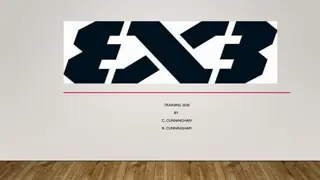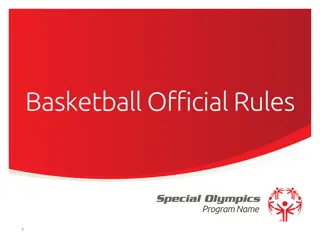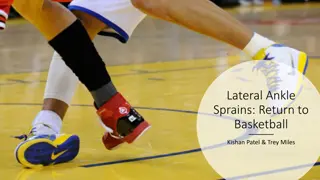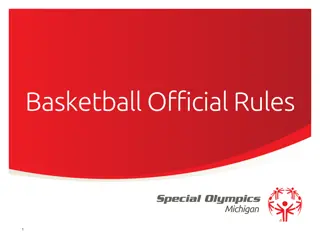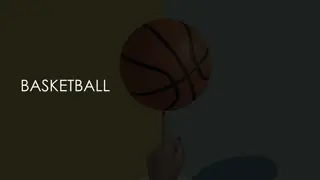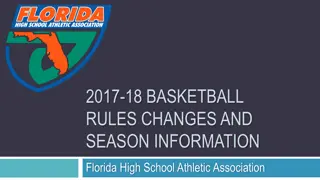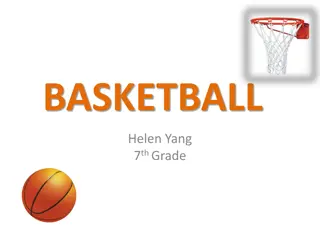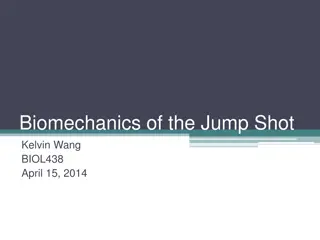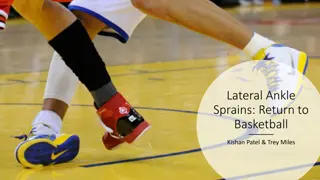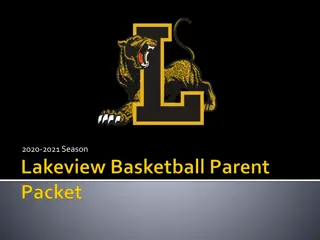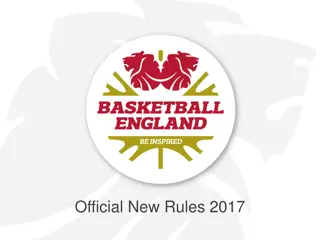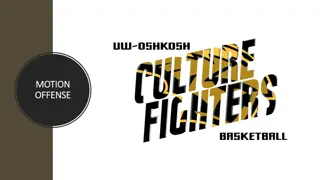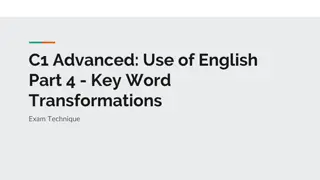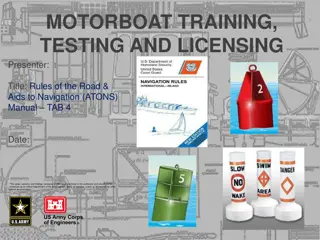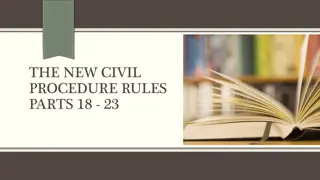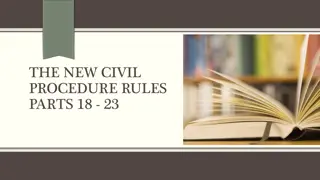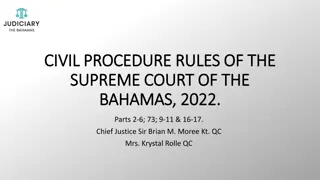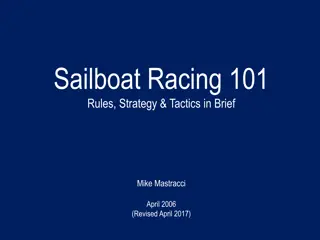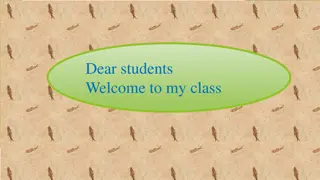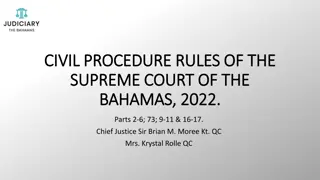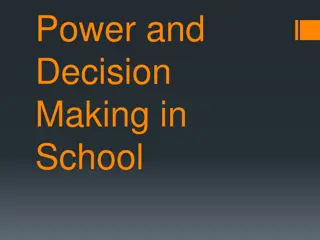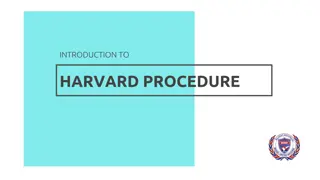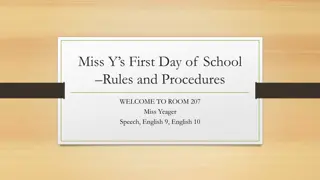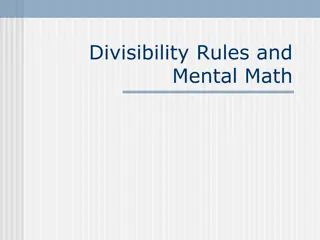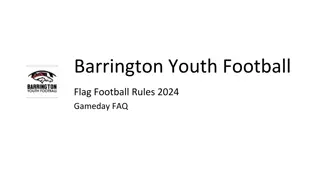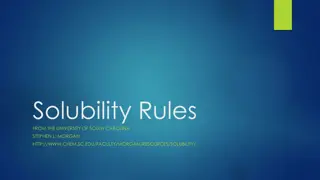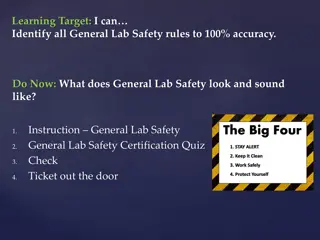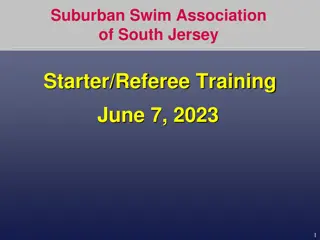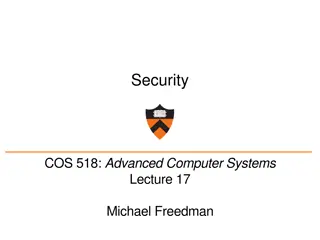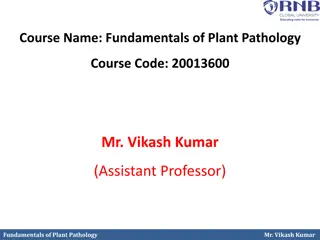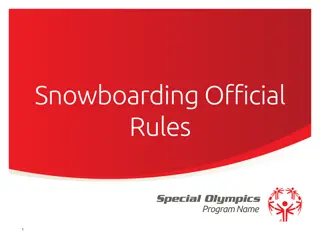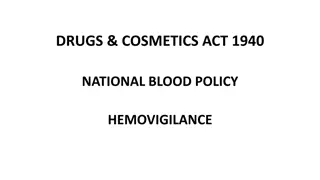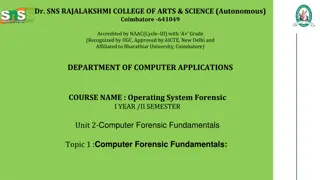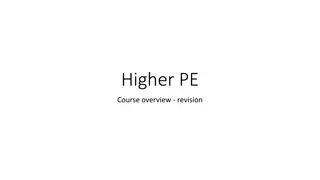Basketball Fundamentals and Rules Overview
Explore the fundamentals and rules of basketball in this detailed guide. From basic comprehension to advanced gameplay strategies, learn about key aspects such as athletic movement, terminology, court layout, scoring rules, fouls, and game structure. Get insights into how basketball is played, including offensive and defensive tactics, team positions, and scoring techniques. Enhance your understanding of the game with visual aids and essential learning objectives.
Download Presentation

Please find below an Image/Link to download the presentation.
The content on the website is provided AS IS for your information and personal use only. It may not be sold, licensed, or shared on other websites without obtaining consent from the author. Download presentation by click this link. If you encounter any issues during the download, it is possible that the publisher has removed the file from their server.
E N D
Presentation Transcript
Wilson Basketball Basketball Fundamentals Ms. DaSilva
Basketball Basic Learning Objectives 0.0-Basic understanding of basketball and athletic movement 0.1-Basic comprehension of the rules of basketball 0.2-Basic comprehension of basketball terminology 0.3-Basic comprehension of how basketball is played 0.4-Basic comprehension of athletic position (triple threat) 0.5-Basic comprehension of ball grips 0.6-Basic comprehension of throwing/ catching
0.1-Basic comprehension of the rules of basketball The Rules Basketball is a team sport Two teams of five players each try to score by shooting a ball through a hoop elevated 10 feet above the ground The game is played on a rectangular floor called the court, and there is a hoop at each end The court is divided into two main sections by the mid-court line If the offensive team puts the ball into play behind the mid-court line, it has ten seconds to get the ball over the mid-court line. If it doesn't, then the defense gets the ball Once the offensive team gets the ball over the mid-court line, it can no longer have possession of the ball in the area in back of the line If it does, it is called Back Court and the other is awarded the ball The ball is moved down the court toward the basket by passing or dribbling The team with the ball is called the offense The team without the ball is called the defense They try to steal the ball, contest shots, steal and deflect passes, and get rebounds
MORE rules of basketball the ball goes to the other team If a basket, also called field goal, is made outside of the three-point arc, then that basket is worth three points A free throw is worth one point Free throws are awarded to a team when a foul is committed Fouling a shooter always results in two or three free throws being awarded the shooter, depending upon where he was when he shot. If he was beyond the three-point line, then he gets three shots Other types of fouls do not result in free throws being awarded until a certain number have accumulated during a half. Once that number is reached, then the player who was fouled is awarded a '1-and-1' opportunity If he makes his first free throw, he gets to attempt a second. If he misses the first shot, the ball is live on the rebound When a team makes a basket, they score two points and
More Rules All levels have two halves. In college, each half is twenty minutes long. In high school and younger, the halves are divided into eight (and sometimes, six) minute quarters. In the pros, quarters are twelve minutes long. There is a gap of several minutes between halves called halftime. Each team is assigned a basket or goal to defend This means that the other basket is their scoring basket At halftime, the teams switch goals The game begins with one player from either team at center court. A referee will toss the ball up between the two. The players jump when the referee tosses the ball and they try to tip it to a teammate. This is called a tip-off In addition to winning the tip off or stealing the ball from an opposing player, there are other ways for a team to get the ball Each game is divided into sections One such way is if the other team commits a foul or violation
Fouls and Violations FOULS Personal fouls: Personal fouls include any type of illegal physical contact. Hitting Pushing Slapping Holding Illegal pick/screen -- when an offensive player is moving. When an offensive player sticks out a limb and makes physical contact with a defender in an attempt to block the path of the defender. Personal foul penalties: If a player is shooting while a being fouled, then he gets two free throws if his shot doesn't go in, but only one free throw if his shot does go in. 1) Three free throws are awarded if the player is fouled while shooting for a three-point goal and they miss their shot. If a player is fouled while shooting a three-point shot and makes it anyway, he is awarded one free throw. Thus, he could score four points on the play. 2) Inbounds. If fouled while not shooting, the ball is given to the team the foul was committed upon. They get the ball at the nearest side or baseline, out of bounds, and have 5 secs to pass the ball onto the court. 3) One & one. If the team committing the foul has seven or more fouls in the game, then the player who was fouled is awarded one free throw. If he makes his first shot, then he is awarded another free throw. Ten or more fouls. If the team committing the foul has ten or more fouls, then the fouled player receives two free throws. Charging. An offensive foul that is committed when a player pushes or runs over a defensive player. The ball is given to the team that the foul was committed upon. Blocking. Blocking is illegal personal contact resulting from a defender not establishing position in time to prevent an opponent's drive to the basket. Flagrant foul. Violent contact with an opponent. This includes hitting, kicking, and punching. This type of foul results in free throws plus the offense retaining possession of the ball after the free throws. Intentional foul. When a player makes physical contact with another player with no reasonable effort to steal the ball. It is a judgment call for the officials. Technical foul. Technical foul. A player or a coach can commit this type of foul. It does not involve player contact or the ball but is instead about the 'manners' of the game. Foul language, obscenity, obscene gestures, and even arguing can be considered a technical foul, as can technical details regarding filling in the scorebook improperly or dunking during warm-ups. VIOLATIONS Walking/Traveling. Taking more than 'a step and a half' without dribbling the ball is traveling. Moving your pivot foot once you've stopped dribbling is traveling. Carrying/palming. When a player dribbles the ball with his hand too far to the side of or, sometimes, even under the ball. Double Dribble. Dribbling the ball with both hands on the ball at the same time or picking up the dribble and then dribbling again is a double dribble. Held ball. Occasionally, two or more opposing players will gain possession of the ball at the same time. In order to avoid a prolonged and/or violent tussle, the referee stops the action and awards the ball to one team or the other on a rotating basis. Goaltending. If a defensive player interferes with a shot while it's on the way down toward the basket, while it's on the way up toward the basket after having touched the backboard, or while it's in the cylinder above the rim, it's goaltending and the shot counts. If committed by an offensive player, it's a violation and the ball is awarded to the opposing team for a throw-in. Backcourt violation. Once the offense has brought the ball across the mid-court line, they cannot go back across the line during possession. If they do, the ball is awarded to the other team to pass inbounds. Time restrictions. A player passing the ball inbounds has five seconds to pass the ball. If he does not, then the ball is awarded to the other team. Other time restrictions include the rule that a player cannot have the ball for more than five seconds when being closely guarded and, in some states and levels, shot-clock restrictions requiring a team to attempt a shot within a given time frame.
Player Positions Center. Centers are generally your tallest players. They generally are positioned near the basket. Offensive -- The center's goal is to get open for a pass and to shoot. They are also responsible for blocking defenders, known as picking or screening, to open other players up for driving to the basket for a goal. Centers are expected to get some offensive rebounds and put-backs. Defensive -- On defense, the center's main responsibility is to keep opponents from shooting by blocking shots and passes in the key area. They also are expected to get a lot of rebounds because they're taller. Forward. Your next tallest players will most likely be your forwards. While a forward may be called upon to play under the hoop, they may also be required to operate in the wings and corner areas. Offensive -- Forwards are responsible to get free for a pass, take outside shots, drive for goals, and rebound. Guard Guard Defensive -- Responsibilities include preventing drives to the goal and rebounding. Center Guard. These are potentially your fastest players and are great ball handlers- dribbling fast, seeing the court, and passing. It is their job to bring the ball down the court and set up offensive plays. Forward Forward Offensive -- Dribbling, passing, and setting up offensive plays are a guard's main responsibilities. They also need to be able to drive to the basket and to shoot from the perimeter. Defensive -- On defense, a guard is responsible for stealing passes, contesting shots, preventing drives to the hoop, and for boxing out.
Basketball Basic Learning Objectives 1.0-Students will demonstrate proper shooting employing basketball shooting cues. 1.1-Grip ball (shooting hand gripping with fingertips in horizontal black ridge, non-shooting hand lightly balancing ball on the side) 1.2- Hold ball at shoulder height (off-centered to shooting hand side) 1.3- Balance: Feet shoulder width apart (athletic position) 1.4-Square shoulders & both feet to face the basket 1.5-Eyes: Look at the target (back of the rim) 1.6-Determine shooting distance (necessity to jump or not) 1.7- Determine trajectory (bank shot or not) 1.8-Elbow: Bend elbow to a 90 degree angle 1.9-Shoot the ball: by pushing ball up and away from body toward the basket 1.10-Follow Through: Snap wrist (wave goodbye to the ball) 1.11-Confirm execution
1. EYES ON TARGET To improve accuracy, locate the target (rim) as early as possible. Keep your eyes on the target and do not follow the flight of the ball. Keeping your target focus is very important!
2. STANCE AND BALANCE Feet are shoulder width apart for good balance. Feet should be in a slightly staggered stance. Your shooting foot is slightly ahead of the non-shooting foot . Point your feet in the general direction of the basket, but not directly at it. We prefer an open stance, but you can also use the closed (squared) stance if that's more comfortable for you. With an open stance, your feet point towards one side of the basket. For example, a right handed shooter will point his or her feet just to the left of the rim for a more natural position and shooting motion. Once you develop a comfortable stance, line up your feet the exact same way on every shot. Whatever stance you use, consistency is critical. Flex/bend your knees on every shot.
3. SHOT POCKET As you catch the ball, move it quickly into the shot pocket Line everything up so the ball and your shooting eye form a straight line to the basket. This is VERY important! Position the ball several inches above your waist Grip the ball properly and be ready to shoot Position the ball in your shot pocket the SAME way every time you catch it
4. GRIP Line up your fingertip pads parallel to the long seams of the ball, so you can monitor the back spin. Leave space between the ball and the middle of your palm. You should be able to insert a pencil between the ball and your palm area. Spread your fingers far enough apart to comfortably balance the ball in one hand. The ball should sit on your finger pads.
5. BALANCE HAND Your non-shooting hand should be on the side of the ball. Your balance hand should not add force or spin to the shot. Your non-shooting hand should not move on delivery and should ALWAYS come off the ball FIRST.
6. DELIVERY 1. The ball should start motion directly upwards from the shot pocket .Your elbow should be positioned comfortably under the ball. The ball stays in front of you and should not go behind your head. 2. Uncoil your body with your legs, core, and arm power all coordinated. Your elbow and wrist should extend in a straight line to the basket. 2. Uncoil your body 1. Directly from Shot Pocket 3. Your shooting hand should extend in a straight line to the rim. Hand position on delivery is very important. The ball should come off the hand with perfect symmetrical backspin. As shown in the picture to the right, your guide hand stays to the side and does not influence the flight of the ball. 3. Straight line to the Rim!
7. UP FORCE AND LANDING Release the ball on the way up, just before the top of your jump. Use your legs to generate up force. You should land in the same spot that you jumped, which shows that you have good balance on your shot.
8. FOLLOW-THROUGH 9. Correct Shot After your shot think about the steps and correct your shot if you were off on any one point http://youtu.be/0sCSK1Ox5Ts
Basketball Basic Learning Objectives 2.0-Students will demonstrate proper dribbling employing the basketball dribbling cues. 2.1-Balance: athletic position 2.2-Dribble to the front/side of dribbling hand 2.3-Non-dribbling hand should be used to protect ball 2.4-Hand position: thumb out and fingers spread 2.5-Ball should be touching finger pads (not palm) 2.6-Dribble in a yo-yo motion at waist height 2.7-Push the ball out ahead to dribble while running 2.8-Confirm execution
Tips To Improve Your Dribbling & Ball Handling Dribble the ball hard. The more time the ball spends in your hand, the more control you have of the ball. Head up at all times. Look at the rim or a spot on the wall during all practice. Use your finger tips to control the ball, not your palm. http://youtu.be/ZNM8e4qReno?t=33s http://www.youtube.com/watch?v=samc97nrPFY
Basketball Basic Learning Objectives 3.0-Students will demonstrate proper passing employing the basketball passing cues. 3.1 Balance: athletic position (triple threat) 3.2- Grip ball (hands on the sides of the ball with thumbs at the back) 3.3- Hold ball at level with chest 3.4-Step toward target (Chest pass: chest of teammate, Bounce Pass: floor about distance between passer and receiver) 3.5-Pass ball: using both hands push ball away from chest 3.6-Follow Through: thumbs rotate pointing down to the floor, palms facing out 3.7-Confirm execution
Basketball Passing Fundamentals TYPES OF PASSES There are essentially two types of passes: Air Pass - The pass travels between players without hitting the floor. Bounce Passes - The pass is thrown to the floor so that it bounces to the intended receiver. Each type of pass comes with its own variations. Basic Variations: Advanced Variations: - Chest Pass - Bounce Pass - Overhead Pass - Wrap Around Pass - Baseball Pass - Dribble Pass - Behind-the-Back Pass - Pick and Roll Pass
CHEST PASS The chest pass is named so because the pass originates from the chest. It is thrown by gripping the ball on the side with the thumbs directly behind the ball. When the pass is thrown, the fingers are rotated behind the ball and the thumbs are turned down. The resulting follow through has the back of the hands facing one another with the thumbs straight down. The ball should have a nice backspin. When throwing a chest pass, the players should strive to throw it to the receiver's chest level. Passes that go low to high or high to low are difficult to catch.
BOUNCE PASS The bounce pass is thrown with the same motion however it is aimed at the floor. It should be thrown far enough out that the ball bounces waist high to the receiver. Some say try to throw it 3/4 of the way to the receiver, and that may be a good reference point to start, but each player has to experiment how far o throw it so it bounces to the receiver properly. Putting a proper and consistent backspin on the pass will make the distance easier to judge. OVERHEAD PASS The overhead pass is often used as an outlet pass. Bring the ball directly above your forehead with both hands on the side of the ball and follow through. Aim for the teammate's chin. Some coaches advise not bring the ball behind your head, because it can get stolen and it takes a split- second longer to throw the pass. WRAP AROUND PASS Step around the defense with your non-pivot foot. Pass the ball with one hand (outside hand). It can be used as an air or a bounce pass. You will often see the wrap-around, air pass on the perimeter and the wrap-around, bounce pass to make an entry into the post.
Basketball Basic Learning Objectives 4.0-Students will demonstrate proper defensive footwork employing the basketball footwork cues. 4.1-Balance: athletic position (knees bent slightly more than usual) 4.2-Up on balls of feet, back straight, and head up 4.3-Both hands up to block passes or shots, and limit vision of the offensive player 4.4-Imagine triangle between offensive player, ball, and basket 4.5-Stay between man and the basket and deny passing lane 4.6-To move slide feet side-to-side (don t cross feet/legs) 4.7-Confirm execution


